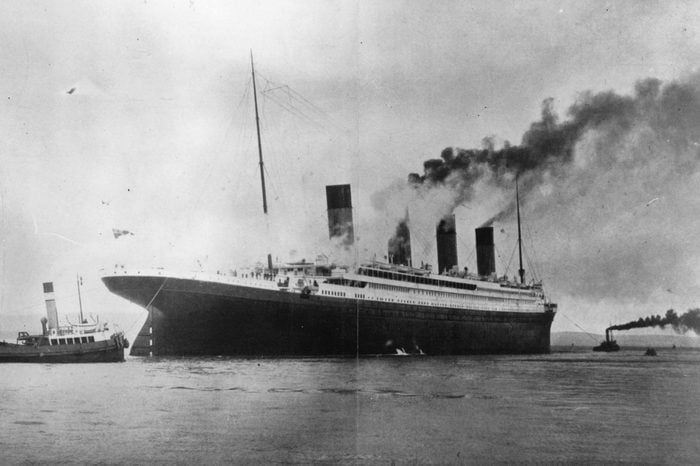
20 Titanic facts about “the ship of dreams”
One of the most famous disasters in history, the April 15, 1912, sinking of the RMS Titanic continues to captivate modern imagination over 100 years later. Its biggest fascination may be in that the Titanic represents so perfectly humans’ hubris in the face of nature: The ship was an engineering marvel deemed “unsinkable,” but it did just that after striking an iceberg on its maiden voyage.
The Titanic’s sinking, which occurred just a couple of years before World War I, also marked the beginning of the end of the glamorous and forward-looking Edwardian era, which as the 1997 movie Titanic showed, was also an era of class differences and repression. But as much as you think you know about this now-mythic ship, the Titanic continues to surprise us. We uncovered these little-known tidbits about the unsinkable Titanic you’ve never heard before.

Finding the Titanic was a front for a Cold War mission
Explorer Robert Ballard explained that looking for the Titanic in 1985 was actually a cover for his recently declassified mission to explore two sunken U.S. nuclear submarines. Ballard, who wanted to find the Titanic wreck, secured the funding from the U.S. Navy in exchange for completing research on the USS Thresher and the USS Scorpion, which coincidentally were located in the same general area. Plus, the search for the Titanic provided the perfect cover story. “They wanted me to go back and not have the Russians follow me, because we were interested in the nuclear weapons that were on the Scorpion and also what the nuclear reactors [were] doing to the environment,” Ballard told CNN in 2018. The secret mission left him with only 12 days to find the Titanic afterward—which he did. Learn about more secret U.S. government operations, revealed.
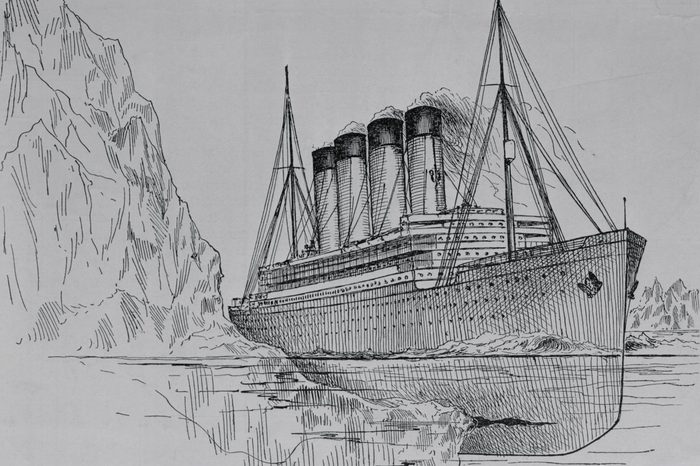
The Titanic had more than one fatal flaw
You may have heard of one of the design flaws in the Titanic was that the airtight bulkheads weren’t totally sealed on top, allowing water to flow from compartment to compartment and eventually sinking the ship. But according to Scientific American, the ship was poorly designed in other ways as well. The steel of the ship’s hull and the iron of its rivets fell victim to “brittle fracture” due to cold temperatures, high sulfur content, and high speeds. Because of this phenomenon, the steel basically shattered, and the rivets popped out easily—all of which sunk the ship 24 times faster than expected. Ironically, if the Titanic had hit the iceberg head-on instead of trying to avoid it and scraping it along the starboard side, the ship would have likely stayed afloat, according to the National Institute of Standards and Technology. The ocean holds more mysteries scientists still can’t explain.
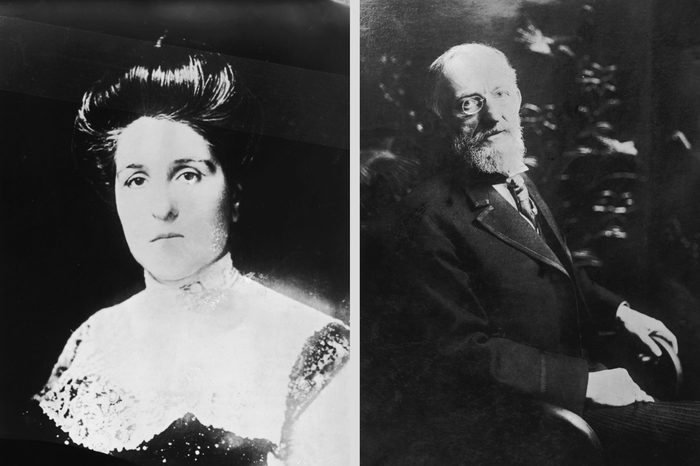
The Titanic had real-life love stories
According to the Belfast Telegraph, there were 13 known honeymooning couples on the Titanic; perhaps the most famous was millionaire J.J. Astor and his young wife, who was five months pregnant. She was helped into a lifeboat by her husband, who later perished in the disaster. In the official Senate inquiry, one witness said Mr. Astor may have been allowed into the boat with his wife had the crew member known she was expecting. Mrs. Astor survived and her baby, John Jacob Astor VI, was born later that year.
The same Senate witness also recalled long-married couple Isidor and Ida Straus, who owned Macy’s department stores and who both perished. “I had heard them discussing that if they were going to die they would die together,” Archibald Gracie said in the inquiry. “We tried to persuade Mrs. Straus to go alone, without her husband, and she said no. Then we wanted to make an exception of the husband, too, because he was an elderly man, and he said no, he would share his fate with the rest of the men, and that he would not go beyond. So I left them there.” This is what life was like aboard the Titanic before it sank.
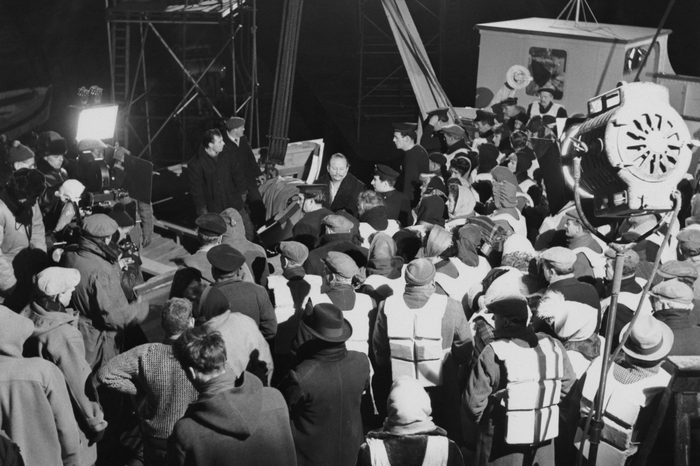
The first Titanic movie premiered just a month after the disaster
We’re all familiar with 1997’s Titanic, as well as possibly the 1958 film A Night to Remember. But the first movie about the disaster was released on May 14, 1912—exactly a month after the Titanic hit the iceberg. The silent film Saved from the Titanic starred actress Dorothy Gibson, who actually survived the Titanic in real life. According to the Los Angeles Times, she even wore the same clothes in the film that she was wearing on the fateful night: a white evening dress, long sweater, gloves, and black pumps. Although some critics praised Gibson’s performance, others said it was too soon to capitalize on the disaster. Unfortunately, like the real Titanic, Saved from the Titanic was lost as well, as all prints of the film are believed to have been destroyed by a fire at the studio in 1914.
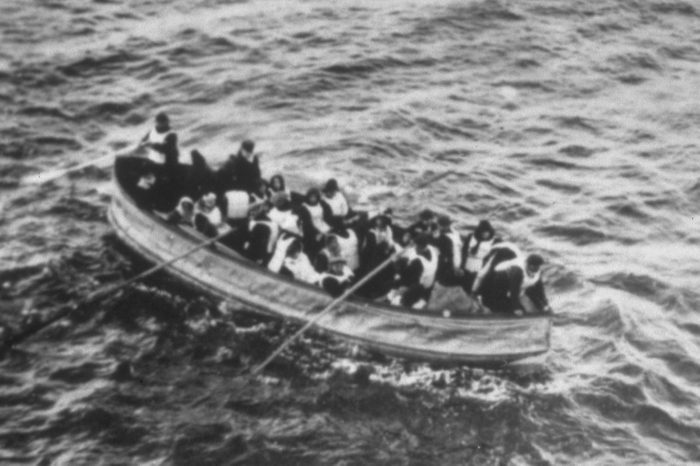
The last Titanic survivor died in 2009
Rose in 1997’s Titanic was supposed to have lived until the age of 101; the real-life last survivor of the Titanic died at age 97 in 2009. According to the BBC, Millvina Dean, was also the youngest passenger on the ship, which she boarded with her parents and brother at just two months old. Although third-class passengers, she, her mother, and her brother escaped in a lifeboat, but her father went down with the ship. Before Dean’s death, Titanic director James Cameron and stars Kate Winslet and Leonardo DiCaprio joined together to help pay her nursing home fees. The last survivor with a memory of the event, although she rarely talked about it, was American Lillian Asplund, who was five in 1912 and died in 2006 at age 99.
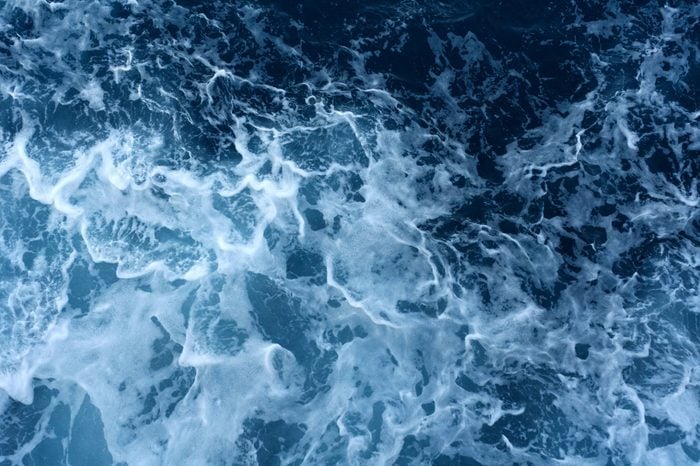
The Titanic is returning to nature
In the first manned submersible dive to the site in nearly 15 years, a 2019 expedition to the wreck of the Titanic found a rapidly deteriorating ship. Ocean currents, salt corrosion, freezing temperatures, and metal-eating bacteria are causing the ship to begin “returning to nature,” as Park Stephenson, a Titanic historian told the BBC. “The captain’s bathtub is a favorite image among Titanic enthusiasts, and that’s now gone,” he said. “That whole deckhouse on that side is collapsing, taking with it the staterooms. And that deterioration is going to continue advancing.” You can see the damage for yourself in an upcoming documentary on the expedition, Mission Titanic, set to air on National Geographic this year. Find out about the creepiest things found at the bottom of the ocean.
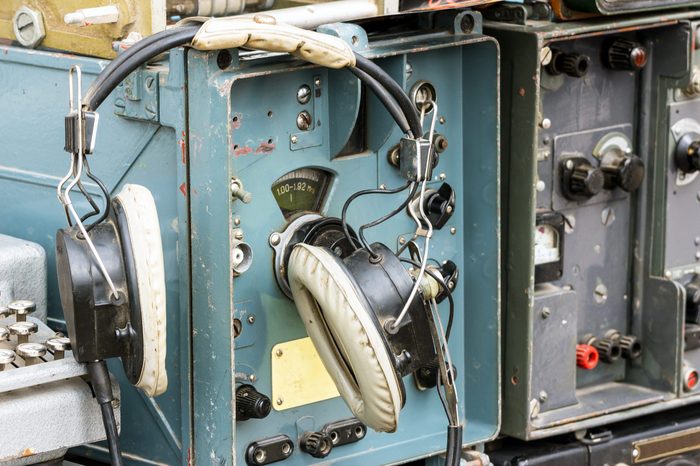
Whether the Titanic should continue to be salvaged is up for debate
That’s the dilemma currently facing a U.S. District judge, reports CNN. The company that holds the salvage rights to the wreck, RMS Titanic Inc., wants to recover the wireless telegraph transmitter used to send out the Titanic’s distress calls before the relic is lost; but a recent agreement between the United States and the United Kingdom seeks to preserve the ship and prevent further salvage. The judge must decide whether there is sufficient educational, scientific, or cultural interest to warrant recovering the transmitter, which would involve cutting out a small piece of the ship to access the room where it’s located.
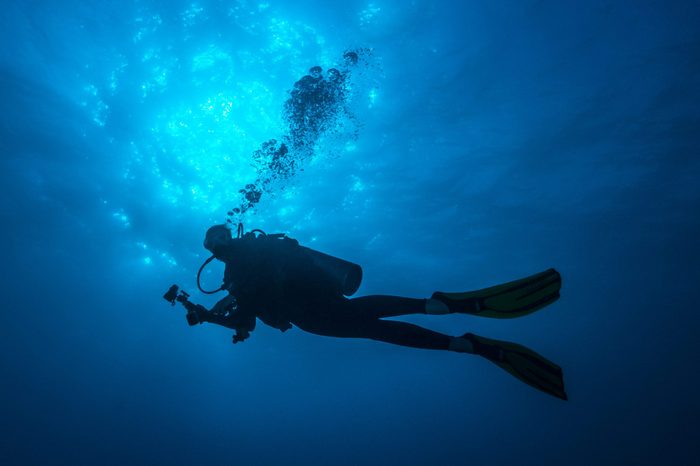
It’s also controversial whether tourists should visit
According to Smithsonian Magazine, fewer than 200 people have ever been down to see the Titanic—and it seems that recently, every time there’s a proposed trip, technical or other difficulties arise to cancel it. Deep Ocean Expeditions stopped running their trips in 2012; OceanGate planned trips in 2018 and 2019 which were canceled but has another planned for 2021. For a whopping $125,000, you can join them; but the real price may be to the ship itself. Even expeditions that have a “look but don’t touch” approach to visiting the Titanic may have unintentional effects on the site: Titanic discoverer Robert Ballard told National Geographic that evidence of these visits include ballasts left behind by subs, evidence of subs bumping into the ship, and trash dropped from boats on the surface. Find out the most incredible undersea treasures ever found.

The Titanic site may hold human remains
Another reason why some experts argue the wreckage of the Titanic should be left alone is because the ship could be considered a final resting place and gravesite. Of the 1,500 people who died, only 340 bodies were recovered, with 1,160 remaining lost at sea. And although no one has actually seen human remains at the wreckage, photographs released in 2010 show clothing and laced-up shoes in positions that suggest bodies once lay there. It’s also possible, reports the New York Times, that preserved corpses remain inside the ship itself, where modern explorers can’t see—but experts haven’t come to a consensus on the issue. These other Titanic mysteries may never be solved either.

The Titanic II recreates the ship exactly
Perhaps a better way to show your reverence for the Titanic is by taking a voyage not to its wreck, but on a replica of the ship itself—with some modern updates, of course. Titanic II is not a sequel to the Academy Award-winning movie (although we always wanted to know more about survivor Rose’s interesting life)—as reported by Scientific American, Titanic II is a new ship being built by Australian billionaire Clive Palmer that, after several delays, is now scheduled to set sail in 2022. Although it will have the latest technology and safety—including enough lifeboats for everyone—the ship will recreate the 1912 version in period detail, and even provide costumes for guests to wear.
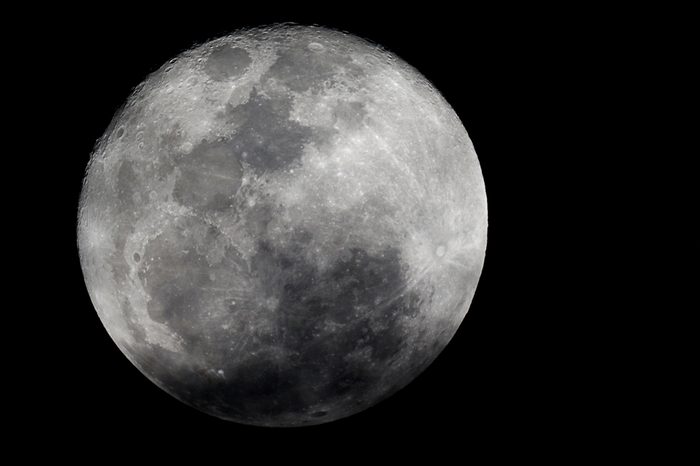
A full moon may have caused the fatal iceberg to cross paths with the ship
Scientists arrived at a theory that the full moon months before could be to blame for the collision, which killed about 1,500 people. Quoting astronomer Donald Olson of Texas State University-San Marcos, National Geographic‘s Richard A. Lovett wrote, “That full moon, on January 4, 1912, may have created unusually strong tides that sent a flotilla of icebergs southward—just in time for Titanic‘s maiden voyage.” This wasn’t a normal full moon, though: “It was the closest lunar approach, in fact, since A.D. 796, and Earth won’t see its like again until 2257,” wrote Lovett. Iceberg theories aside, here are the ghost ship mysteries that can’t be explained.
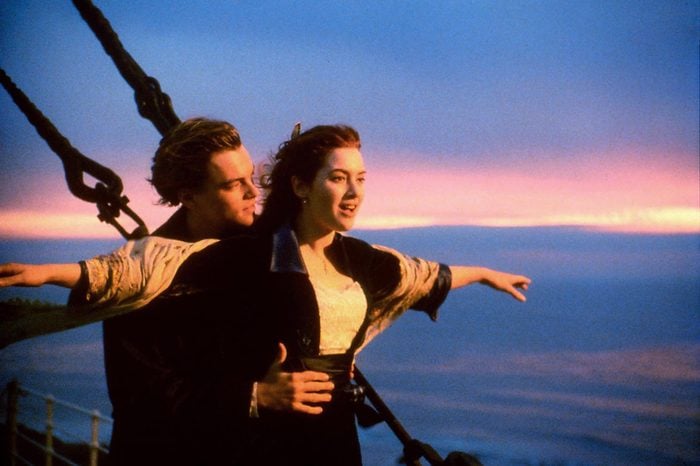
Nearly eleven Titanic replicas could be built with the money James Cameron’s Titanic movie has made worldwide
According to Money magazine, the Titanic cost about $7.5 million to build in 1912, which using the U.S. Bureau of Labor Statistics inflation calculator, would be about $197 million today. James Cameron’s Academy Award-winning 1997 film Titanic earned nearly $2.2 billion worldwide—enough to construct about 11.2 complete replicas of the ship.
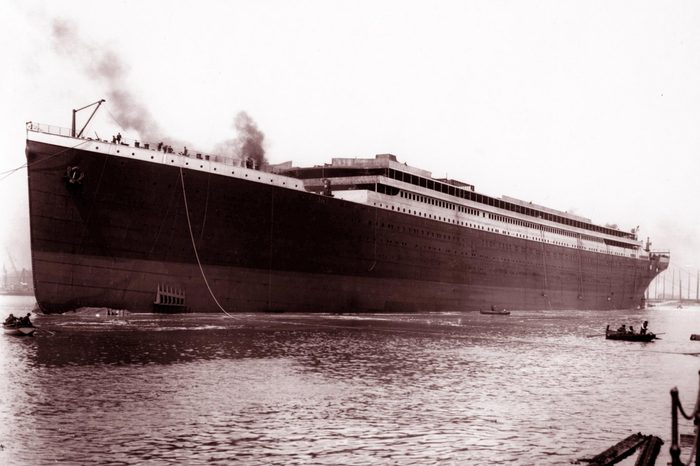
Research says an optical illusion prevented the ship from receiving help
British historian Tim Maltin believes that the atmosphere on the night of the sinking created conditions that made it difficult for the crew to spot icebergs—and for other ships to spot the Titanic. Smithsonian magazine reported back in 2012, “Atmospheric conditions in the area that night were ripe for super refraction, Maltin found. This extraordinary bending of light causes miraging, which, he discovered, was recorded by several ships in the area. He says it also prevented the Titanic’s lookouts from seeing the iceberg in time and the freighter Californian from identifying the ocean liner and communicating with it.” Atmospheric conditions are just one of the many times weather changed history.
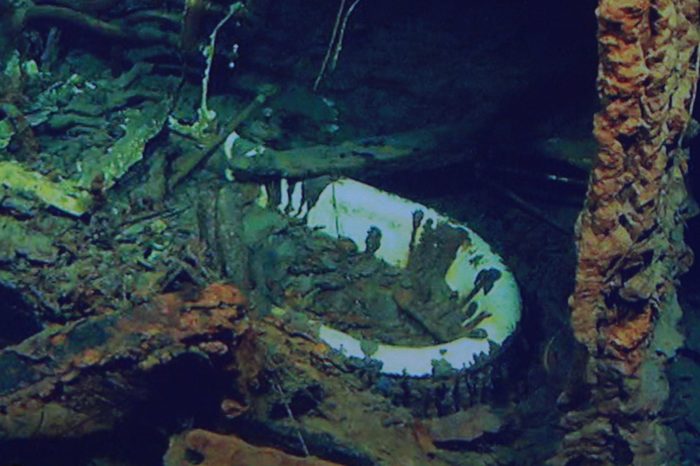
Researchers completed a map of the wreck site for the first time in 2012, using over 100,000 photos taken by underwater robots
The Associated Press reported in early March that a team of researchers completed “what’s believed to be the first comprehensive map of the entire 3-by-5-mile Titanic debris field,” a milestone that could lead to more insights as to what happened when the ship sank on April 15, 1912. “An expedition team used sonar imaging and more than 100,000 photos taken from underwater robots to create the map, which shows where hundreds of objects and pieces of the presumed-unsinkable vessel landed,” wrote AP reporter Clarke Canfield. Though the site wasn’t fully mapped until now, the Titanic‘s wreckage was first discovered in September 1985 by underwater explorer Robert Ballard.
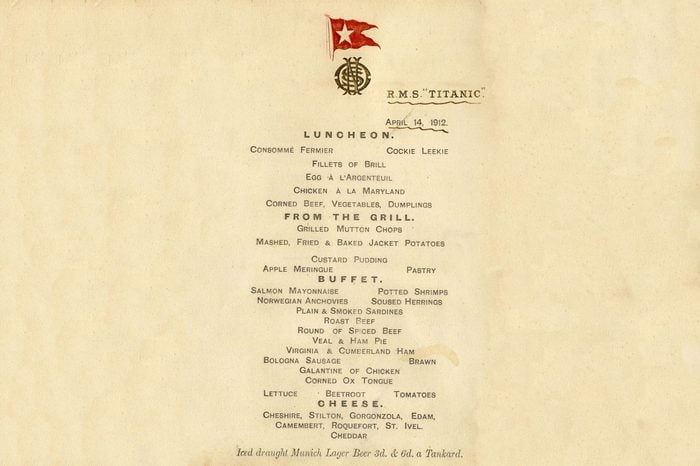
The sold auction price for the Titanic’s final lunch menu: $88,000
Time reported the final sale price for the printed menu actually exceeded the auction house’s expectations of $18,000. Abraham Lincoln Salomon, a New York businessman who was among the small number of first-class men who climbed onto a lifeboat, rescued the menu from the ship, according to CNN. The rich occupants of that lifeboat, dubbed the “Money Boat,” allegedly bribed the crew to sail away even though it could have held more people. Another first-class passenger, Isaac Gerald Frauenthal, signed his name on the back of the menu: He may well have eaten the meal, which included grilled mutton chops and smoked sardines.

More than 5,000 other artifacts were also up for grabs
A huge collection of salvaged Titanic artifacts, which includes clothing, parts of the ship, and diamond jewelry, owned by Premier Exhibitions, was headed for the auction block in 2018, reported CNN. The collection of items was valued at $200 million, CBS News reported. But although a museum group tried for the collection, the BBC reports the artifacts actually went to a hedge-fund consortium. Items from private collections, such as those that have been passed down through survivor’s families, have also gone up for sale. CBS News also reported a cracker from the ship sold for $23,000 in 2017, and a violin owned by the Titanic’s orchestra leader fetched more than $1.4 million in a 2013 auction, one of the quirkiest items that sold for millions at an auction.
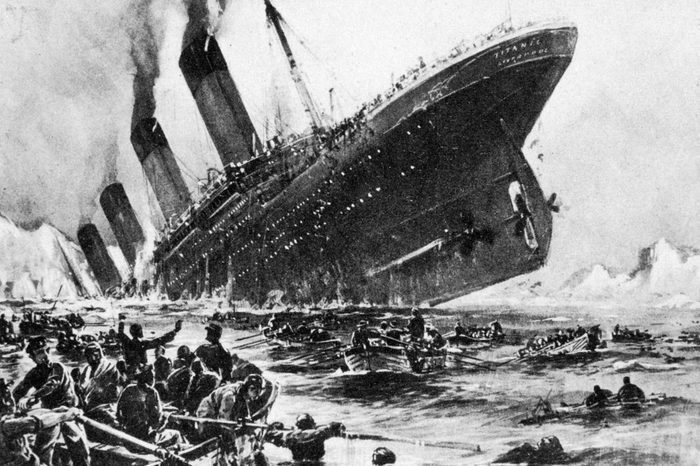
Did an 1898 novella anticipate the Titanic disaster?
The plot of Morgan Robertson’s Futility bears an uncanny resemblance to the events surrounding the sinking of the Titanic, published 14 years before the voyage. The book tells the story of the Titan: “The largest ship ever built, billed as ‘unsinkable’ by its British owners and the press, strikes an iceberg one April and goes down. Due to a lack of lifeboats, more than half the passengers perish in the North Atlantic,” wrote the Portland Press Herald of the book’s plot. Sound familiar? Futility has since been renamed The Wreck of the Titan, and it’s available for free on Google Books. If this book has you freaked out, you’ll really be spooked by these other historical predictions that came true.
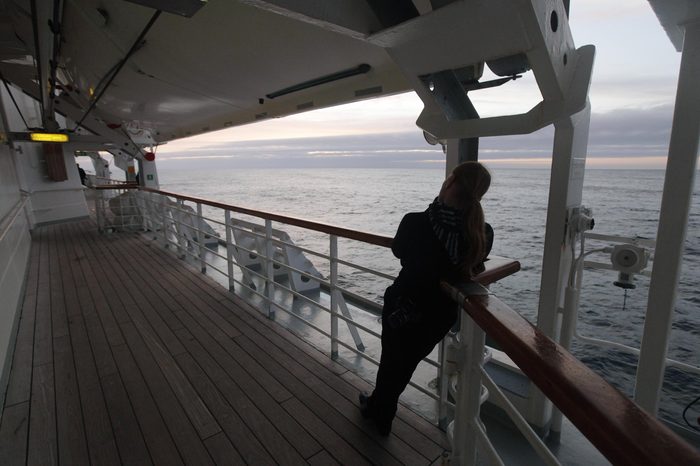
There was a cruise that echoed the Titanic experience
Leaving exactly 100 years after the Titanic began its ill-fated voyage, a 2012 memorial cruise made its way to Halifax, Nova Scotia, where many Titanic victims were laid to rest, and later arrived at the spot in the Atlantic about 370 miles from Canada where the ship sank. According to an NPR reporter who was on board, the ship’s horn sounded at the exact moment when the iceberg struck 100 years ago, at 11:40 p.m. on April 14; then sounded again when the ship sank below the surface at 2:20 am on April 15. A similar cruise, this one taking the ship’s original route from England, seemed to have some of the Titanic’s bad luck: It had to briefly turn back because a passenger had a suspected heart attack, reported the Daily Mail.
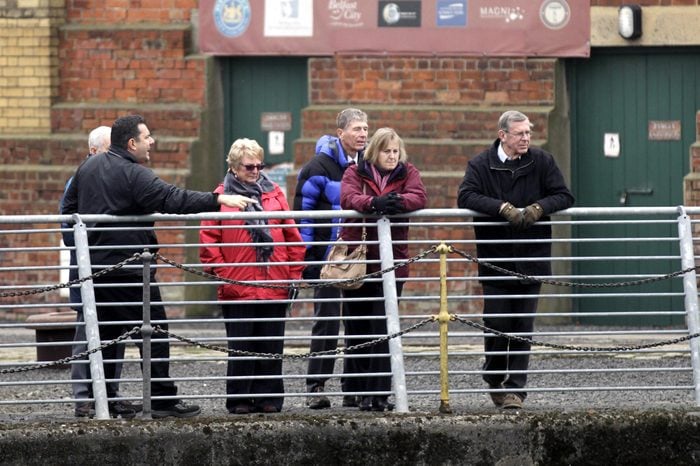
It’s still one of the biggest local attractions and shows no sign of stopping
“Tragedy plus time equals tourism.” That’s what one Titanic expert and guide says, reports the Philadelphia Inquirer, and it’s true! In 2017-2018 the Titanic Belfast exhibit recorded its busiest year to date since the tourist attraction opened its doors in 2012 in Belfast, Northern Ireland, where the Titanic was built and later began her ill-fated journey. More than 841,000 visitors walked through its doors during that period—a 13 percent increase from the year prior! And here’s why we are still fascinated by the Titanic over a century later.
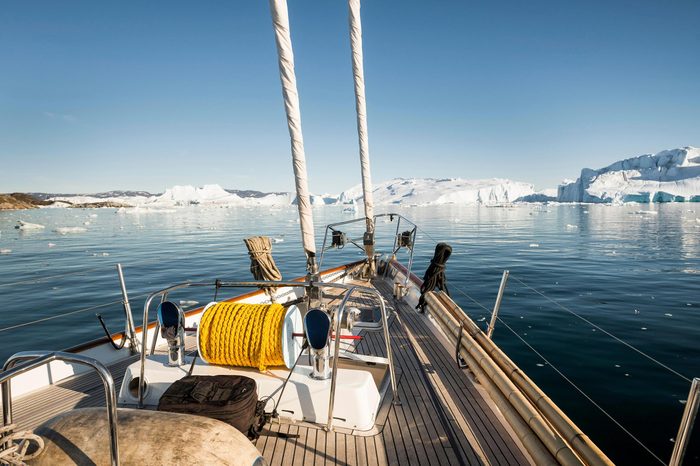
Even today, major ships still get “iced” by ocean bergs
Ships continue to struggle with icebergs to this day. In 2011, “an iceberg tore a hole in the hull of a Russian fishing boat cruising around the Antarctic. The 32-person crew threw cargo overboard to lighten the ship while waiting nearly two weeks for rescue,” wrote Lauren Everitt for BBC News Magazine. In fact, research into Atlantic iceberg sighting records has shown that the number of icebergs floating into a ship’s path has increased in recent decades partly due to climate change. As we all know by the shipwreck evidence and lost lives, the Titanic did actually sank, but these are the famous history moments that never happened.
